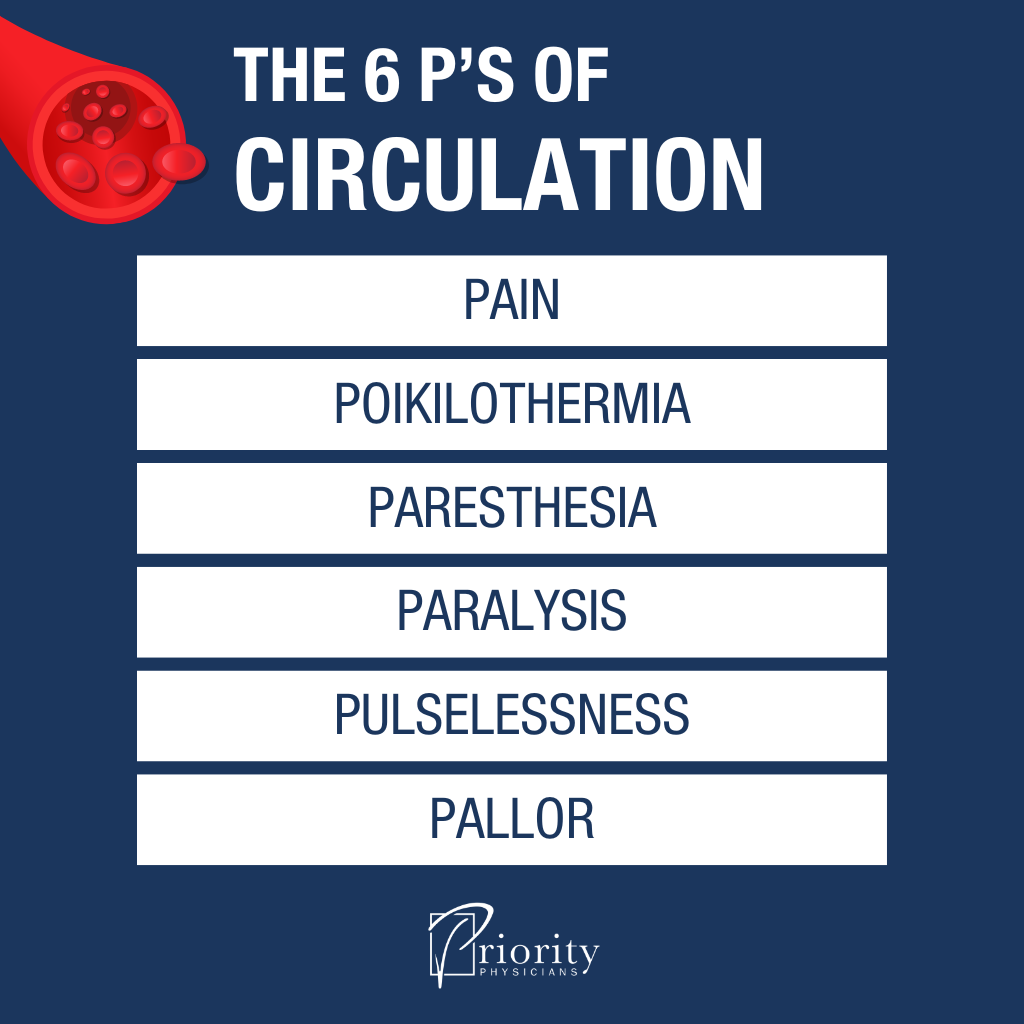When I chat with patients during a physical exam, some of them mention cold feet.
They frame it casually: “By the way, my feet are always cold. That’s common with age, isn’t it?”
It can be. But it doesn’t have to be.
Many people simply have an occasional chill in their legs or feet, with no underlying medical issue. But it’s not inevitable with normal aging, and there are steps you can take to help. Discover four simple tips on how to improve circulation in legs and feet below.

Signs of Poor Circulation
If it seems like your extremities are cold all the time, your doctor will want to determine if your circulation is somehow impaired. He or she will conduct a neurovascular evaluation and assess the degree of seriousness according to the 6 P’s of circulation.
The first three P’s are:
- Pain: discomfort within an extremity
- Poikilothermia: when one or more extremities measure at a lower temperature than the rest of the body
- Paresthesia: tingling or numbness in a limb
In more advanced cases of impaired blood flow, legs or feet may exhibit three additional P’s, which are more critical and require urgent evaluation/treatment:
- Paralysis: inability to move the affected part
- Pulselessness: unresponsiveness at certain pulse points
- Pallor: pale or discolored skin due to lack of blood flow
But before you worry that your cold legs and feet need urgent attention, let’s explain what causes poor blood flow and how to improve circulation in the legs and feet.
Causes of Poor Circulation
Your heart pumps warm blood to all your extremities. But the points farthest from the heart — the feet and hands — naturally have the least perfusion. As a result, toes and fingertips tend to be the body’s chilliest spots.
The situation becomes complicated if peripheral vascular disease is present. Here, the patient’s blood pressure isn’t vigorous enough to oxygenate the extremities’ tissues, so they’re routinely cold. We review those 6 P’s to determine how serious the situation is.
At Priority Physicians, we use the Ankle Brachial Index to routinely screen patients for vascular issues. This involves placing blood pressure cuffs around your arm and ankle and comparing how the pressure differs between the two.
We can also check your circulation via ultrasound, looking for any buildup of plaque. The same kind of buildup that produces a heart attack or stroke may also exist in the arteries of the arms and legs, causing decreased blood pressure and compromising blood flow. When someone tells me their feet are always cold, it makes me wonder if plaque buildup in their femoral artery is the cause. (And if that artery’s compromised, how do the arteries in the heart look?)
So, mention your cold feet to your doctor. We’re happy to run simple tests to put your mind (and feet) at ease.
How to Improve Circulation in Legs and Feet
If you have poor circulation in your legs or feet, can you improve it? Here’s some good news: yes, you can. These four tips can help:
Tip #1: Move
Avoid a sedentary lifestyle. Walk, exercise, and do what it takes to make your body’s plumbing work. When you move, your arteries engage in some healthy expansion and contraction and your tissues demand greater blood flow — and that’s beneficial for warming the extremities.
Tip #2: Stand Up
Standing goes hand-in-hand with more movement. The more you stand, the more you engage the large working muscles in the legs (quadriceps, hamstrings, calves), and the more blood pumps to support them.
Tip #3: Don’t Smoke
Smoking is the #1 cause of peripheral vascular disease. It’s deadly for arteries, causing them to narrow with plaque or become more susceptible to blood clots.
Tip #4: Control Your Cholesterol and Blood Pressure
The same causes of coronary artery disease — high cholesterol, high blood pressure, high blood sugar, and excess weight — deposit plaque within your peripheral arteries and contribute to poor circulation in your legs and feet. Your physician can help you get these factors under control.

Let’s Warm You Up!
Cold legs and feet may seem like a minor issue… and it often is. For many people, cold legs and feet are simply age-related and completely normal.
But it’s always best to be sure. Reach out to your Priority Physicians if your legs and feet are regularly cold. We’re here to keep your circulation strong and your extremities warm and healthy.
We provide efficient testing, discuss with you any issues we might uncover, and help you understand how to improve circulation in your legs and feet.
Don’t get cold feet about consulting your doctor. Let’s chat.

